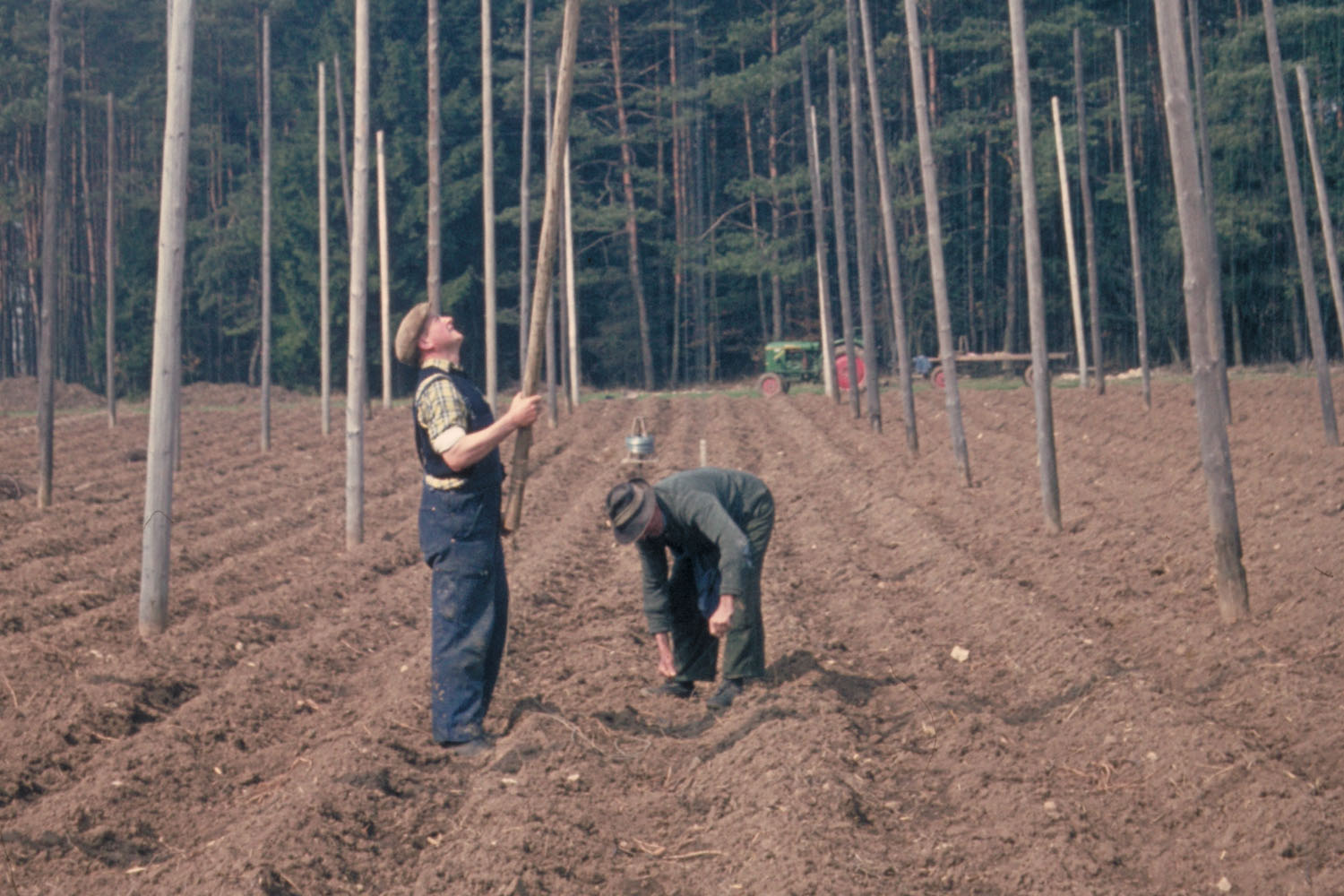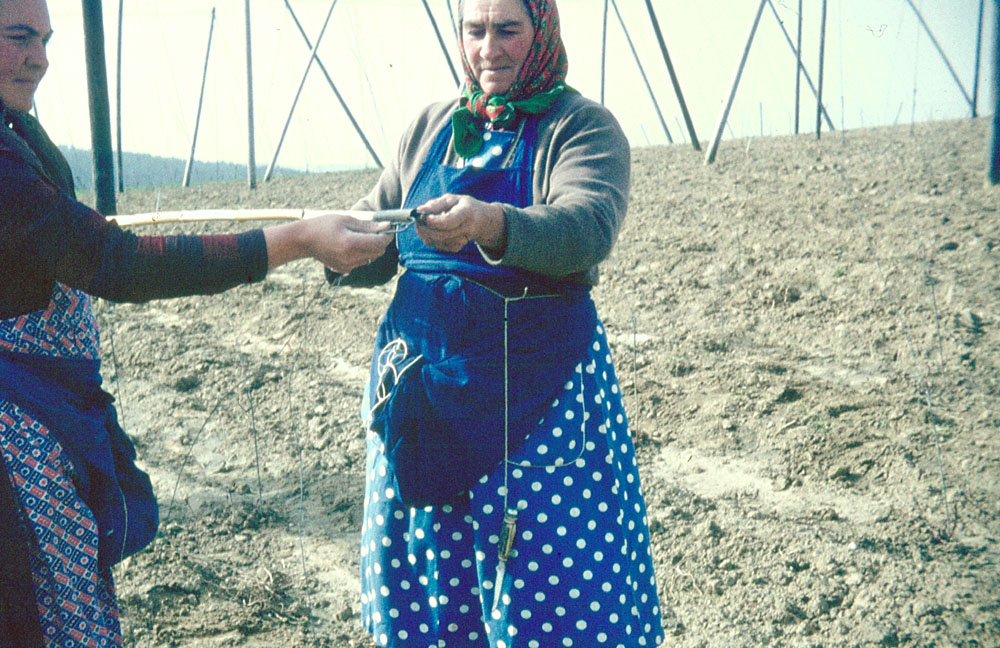
The hook on hops
Old hop farmers still remember hanging the wires with hooks
Many hop growers today swear by hanging the wires on which the hops grow upwards as early as autumn. It may be that with the winter storms a few of the wires become detached from the ground again. But the bit of reworking in the spring is easily outweighed by the benefit of having all the work already done.
In the past, such a thing would not have been possible. This is because the wire was not yet firmly attached on the hop trellises. A wire hook was mounted on the top of each individual wire, and you had to hook this to the trellis. This technique became widespread from about the time after World War I, earlier for one farmer and with some delay for another. At that time, wire replaced the cord that had been common until then, the “spagat” as it was called in the Hallertau region. A key argument for switching to the new technology was probably that, unlike string, wire could be used several times. To do this, however, it had to survive the growth and harvesting of the hop bines undamaged, and this was only possible if hook, wire and hop bines could be relatively easily removed at the end of the harvest.
Because only very few farms had tractors before the 1950s, and therefore no pulpits with which one could be transported upwards, the wire had to be hung from the ground. For this purpose, a long pole was needed, whether made of bamboo, metal or any kind of wood, each hop grower decided according to his individual taste. At the upper end of the pole there was a device to which hook and wire could be attached in such a stable way that it did not immediately fall down again when it were lifted, but it was also only loosely connected so that the wire could be attached relatively easily to one at the top.
If up to that point throwing accuracy was required when mounting the cords, from now on a good eye was needed to ensure that the hook did not miss its target at the top. However, anyone who owned a few thousand hop poles eventually managed to do it without looking, or at least that’s how old hop farmers described it in retrospect. After hours of staring into the sunlight and the right degree of neck pain in any case an advantage. Those who could afford it subcontracted the work to wire-hanging specialists who were paid by quantity.

With the advent of hop-picking machines from the mid-1950s, this method soon came to an end. The hooks were poison for the sensitive picking fingers and picking drums in the picking machines. And even if the hooks were initially still laboriously pinched off before harvesting so that they could later be tied back onto the wire, most farmers quickly switched to lighter wire that was tied with a loop at the top, torn off during harvesting and then thrown away. Just as it is still common today.
In our museum hop garden we have revived the old technique.